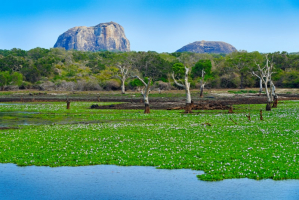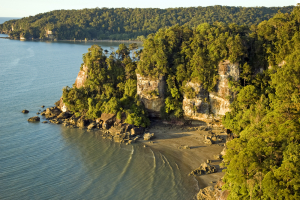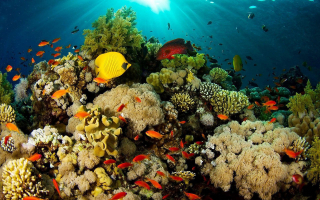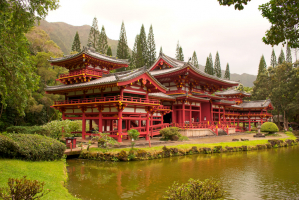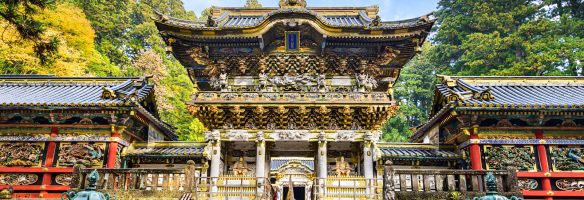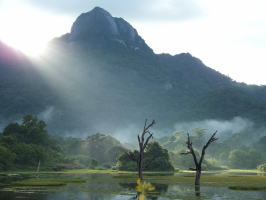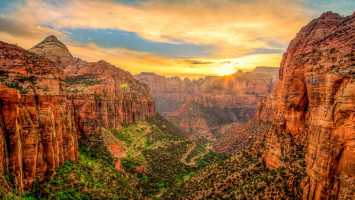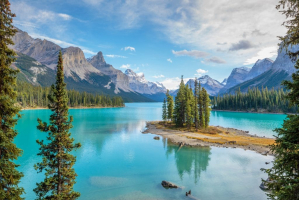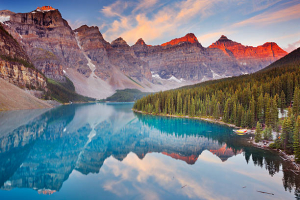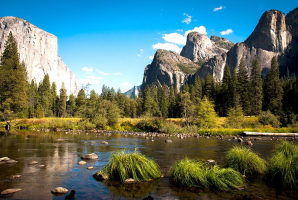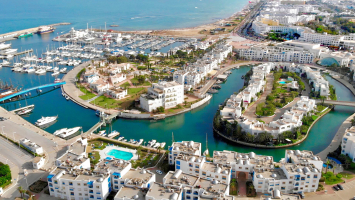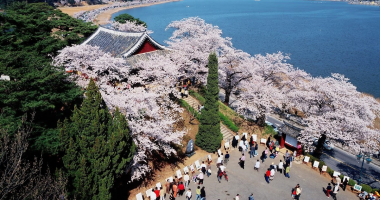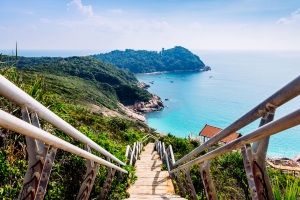Top 13 Most Beautiful National Parks in Japan
Japan has hundreds of national parks with a diverse range of environments, including tropical beaches, active volcanoes, ancient forests, and crater lakes. ... read more...Ready to go exploring? Here are the most beautiful national parks in Japan.
-
The Bonin Islands, as they are commonly known, were fiercely disputed during WWII and are part of the archipelago that makes up Ogasawara National Park. The long ferry excursions to this distant area are well worth it because of the stunning splendor on display. After a long drive, approaching the magnificent coves and hidden beaches that dot its coastline is an incredible and relaxing experience. Ogasawara, which is unique in terms of evolutionary legacy, is frequently referred to be the "Galapagos of the Orient", and as such, it is intriguing to explore.
The turquoise seas that surround the islands attractively frame the spectacular scenery, which includes numerous indigenous species of animals, vegetation, and mammals. The beautiful granite arch at Minamijima is only one of the national park's features. What are you waiting for with excellent diving, enjoy hiking, and an incredible range of water activities to enjoy? Ogasawara's hidden beauty is a wonderful destination to visit.
Location: Chichijima, Ogasawara, Tokyo 100-2101, Japan
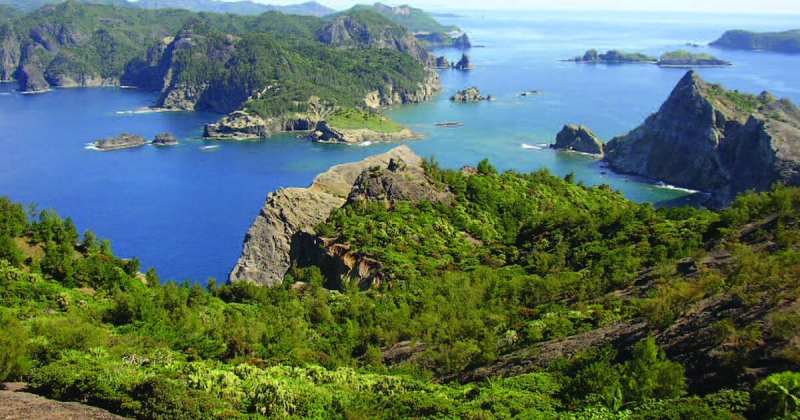
Ogasawara National Park 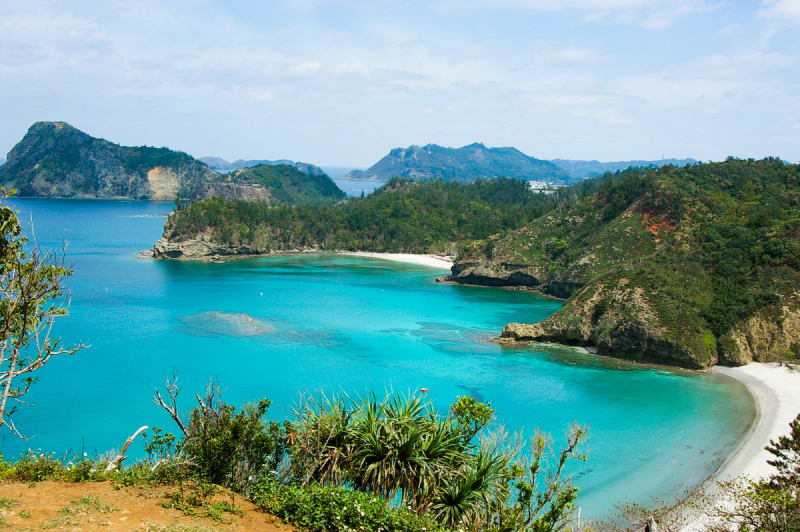
Ogasawara National Park -
The Iriomote-Ishigaki National Park is located in Okinawa Prefecture, Japan. It is situated on and surrounding the East China Sea's Yaeyama Islands. Iriomote National Park was founded in 1972 and encompassed the islands of Iriomote, Kohama, Kuro, and Taketomi. The protected area was expanded to include Ishigaki Island in August 2007. The remote islands of this national park, famous for the Iriomote wild cat that lives inside its borders, are just breathtaking to explore. Some of the islands are surrounded by lagoons, and their crystal clear seas, as well as the subtropical fauna and flora that cover their low-lying interiors, contribute to the splendor of this untamed environment.
Wonderful views abound, and there are some sweeping vistas to be seen while hiking along the limestone cliffs that occasionally gaze out over the beaches below. In addition, cascades highlight the deep undergrowth with their beautiful melodies and the lovely image they produce amidst the trees. The beautiful Iriomote-Ishigaki National Park is enhanced by birds hovering overhead.Location: Yaeyama Islands, Okinawa, Japan
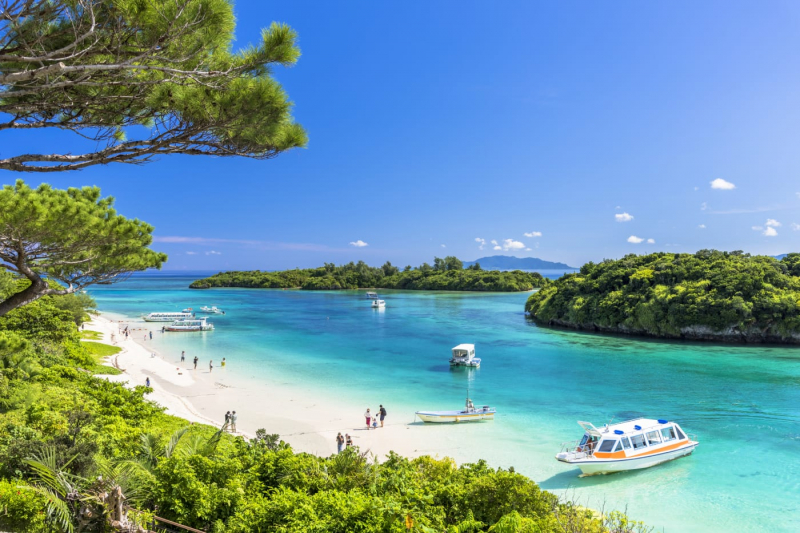
Iriomote-Ishigaki National Park 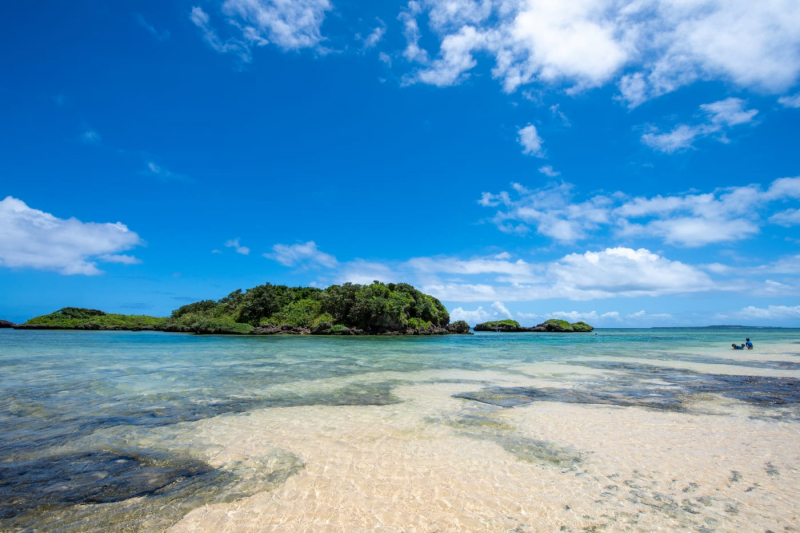
Iriomote-Ishigaki National Park -
The stunning landscapes of this national park, named after Mount Aso and the Kuju Mountains, are dominated by the tall peaks that rise suddenly from the flatlands surrounding them. Mount Aso, an active volcano, has a gorgeous crater that visitors can walk about, and there are several hot springs nearby that are enjoyable to soak in. The volcanic terrain is bleak and scarred by lava flows, yet it is all the more stunning because of it. The Kuju Flower Gardens, located on the plains under the Kuju Mountains, burst with color and energy. It's a relaxing and refreshing place to come, and the gardens' gorgeous mountain background adds to the beauty.
The national park is one of Japan's top sites for hiking or driving through magnificent volcanic landscapes and observing active volcanoes. Mount Aso allows visitors to see its active crater, while the Kuju Mountains, the highest mountains in Kyushu, entice hikers with an appealing network of paths. Hot springs are naturally associated with volcanoes, and they feed some of the country's top onsen towns, including Kurokawa, Yufuin, and Beppu.
Location: Ichinomiyamachi Miyaji, Aso, Kumamoto 869-2612, Japan
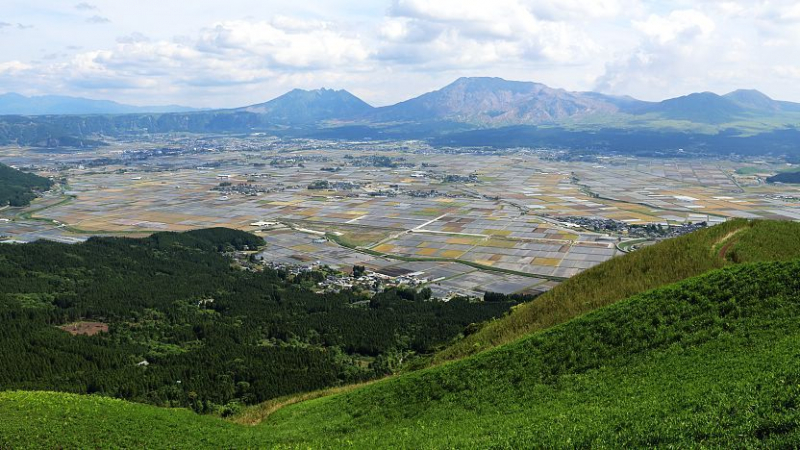
Aso-Kuju National Park 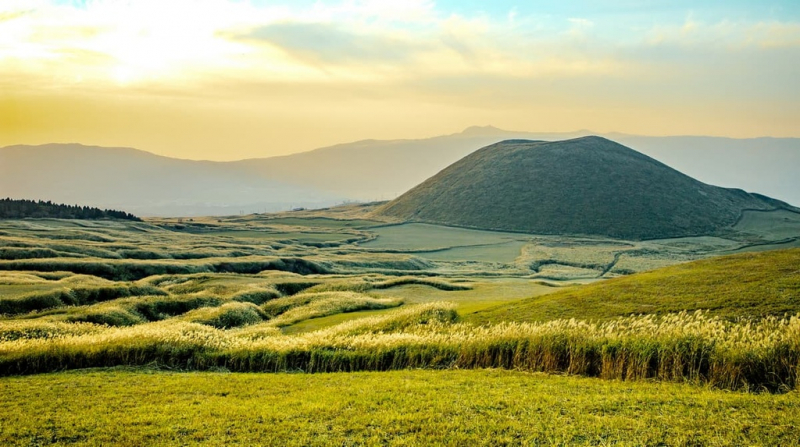
Aso-Kuju National Park -
Towada-Hachimantai National Park is a Japanese national park that spans two prefectures: Aomori, Iwate, and Akita. The Towada-Hakkda region includes Lake Towada, Mount Hakkda, and the majority of the Oirase River basin. Mount Hachimantai, Mount Iwate, Tamagawa Onsen, and Akita Komagatake are all part of the Hachimantai region. The two sites are separated by 50 kilometers (31 miles) and span an area of 854 square kilometers (330 sq mi).
This hilly location includes a number of nice routes and roads that make for great outdoor trekking. The park varies with the seasons, and the snow-covered Juhyo woods are a stunning and rare sight to see in the winter. In the summer, a plethora of colors bloom and bring life to the region thanks to the diverse fauna and plants that cover the park's mountains. Because of the volcanic character of the area, hot springs may be discovered inside Towada-Hachimantai, and gorgeous rivers and lakes are also scattered throughout the never-ending mountains.
Location: Okuse, Towada, Aomori 018-5501, Japan
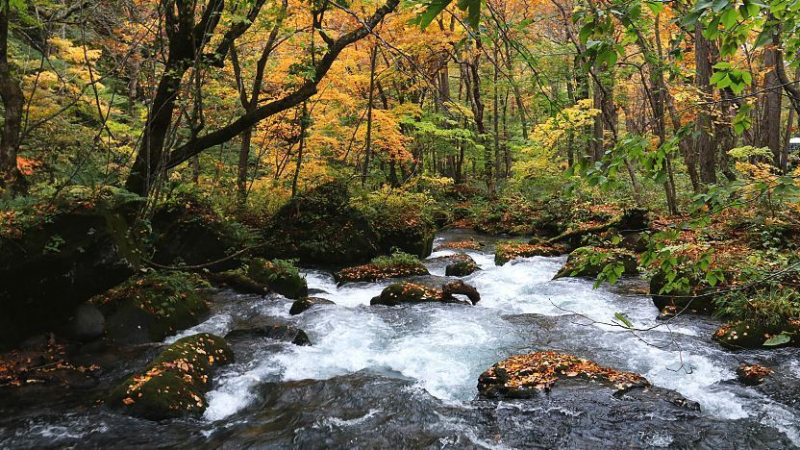
Towada-Hachimantai National Park 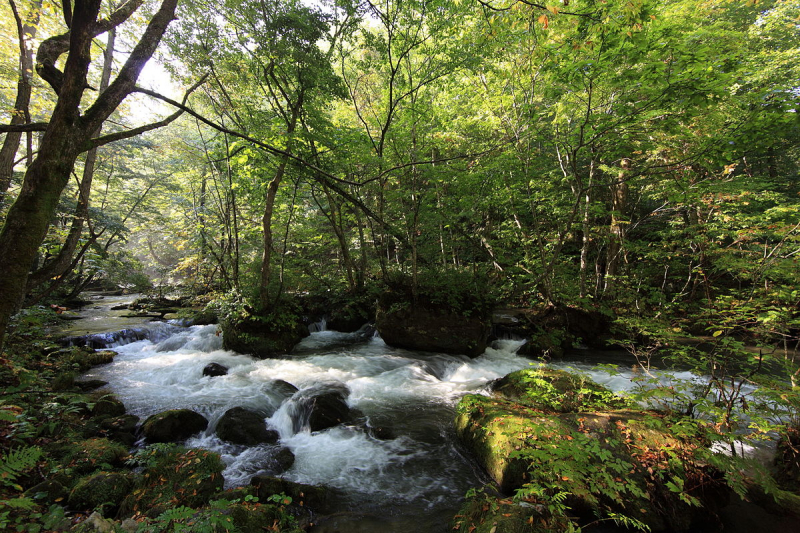
Towada-Hachimantai National Park -
One of the spectacular natural beauties in Yoshino-Kumano is the unusual look of the rock formations that rear magnificently along the shoreline of this national park. These unique geological marvels jutting out into the water are fascinating to view, as are the varied landscapes that mix and combine to form a stunning patchwork of spectacular sights. Peaceful rivers wind their way through deep ravines that transform into mountains before your eyes, trees cover the slopes and valleys, and temples and waterfalls may be found in between.
The holy Mount Omine, which is enveloped in mist and covered in rich fauna and vegetation, is a treat to visit, as is Yoshino Mountain, which gives stunning views of the surrounding region from its peak. Following the old cobblestone roads that snake their way through the dark trees is a wonderful experience.
Location: Ozato, Kiho, Minamimuro District, Mie 519-5835, Japan
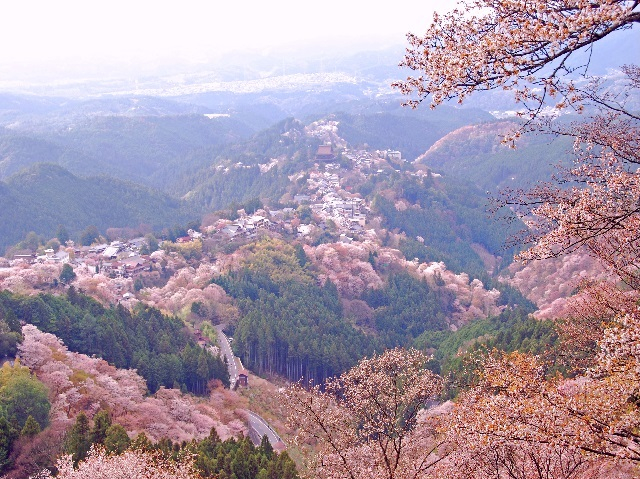
Yoshino-Kumano National Park 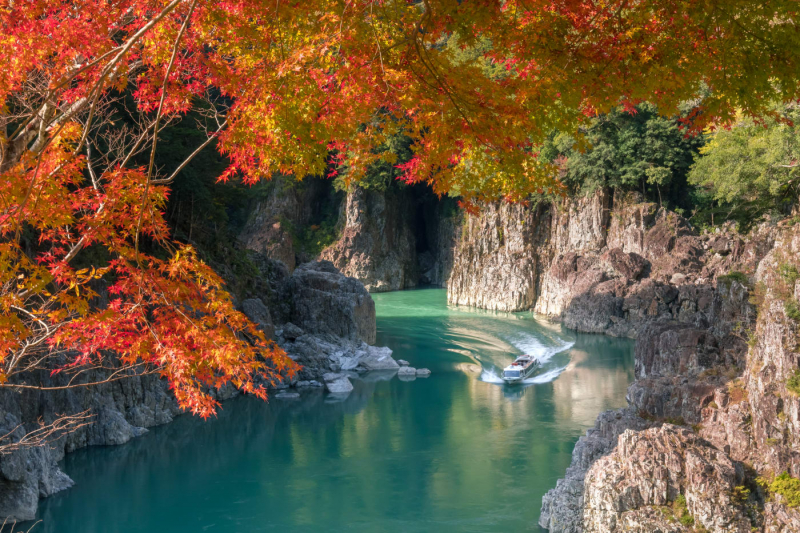
Yoshino-Kumano National Park -
Kerama Shot National Park is a Japanese national park in Okinawa Prefecture. It was founded in 2014 and is located in and near the Kerama Islands. The park spans 3,520 hectares (8,700 acres) in the municipalities of Tokashiki and Zamami, as well as 90,475 ha (223,570 acres) of adjacent seas. The Kerama Islands were once included in Okinawa Kaigan Quasi-National Park. This lovely cluster of islands off the coast of Okinawa is stunning in its surreal aspect. The magnificent turquoise seas that surround the islands give way to the creamy white beaches that are so enjoyable to lie on.
The low-lying interiors of the islands are covered with lush fauna and vegetation, and staying overnight in one of the minshukus on offer is well worth the investment. Offshore, the vibrant hues of the coral reefs draw scuba divers and snorkelers who enjoy the wonderful underwater world that presents such a beautiful image. Sea turtles float past, and lucky tourists may catch sight of humpback whales, which travel through its waters on occasion. Kerama Shoto National Park is an earthy wonderland that begs you to visit.
Location: Itoman, Okinawa, Japan
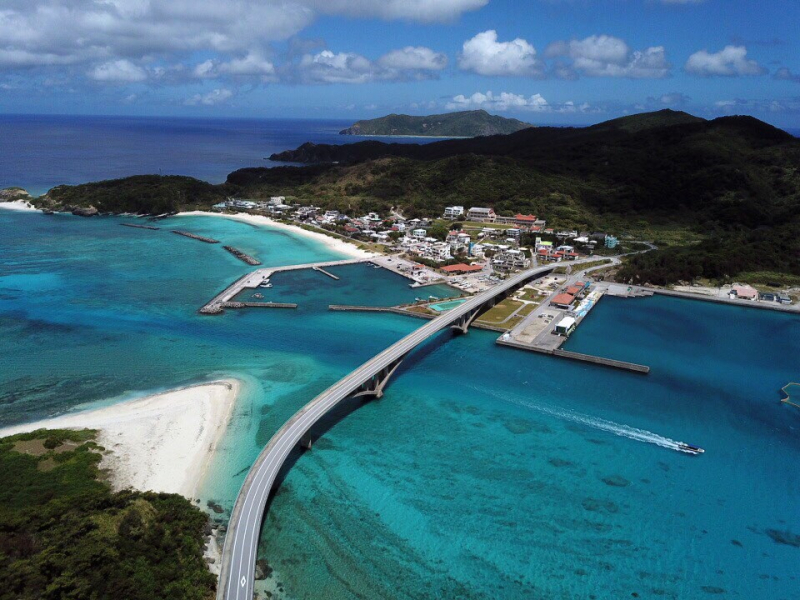
Kerama Shoto National Park 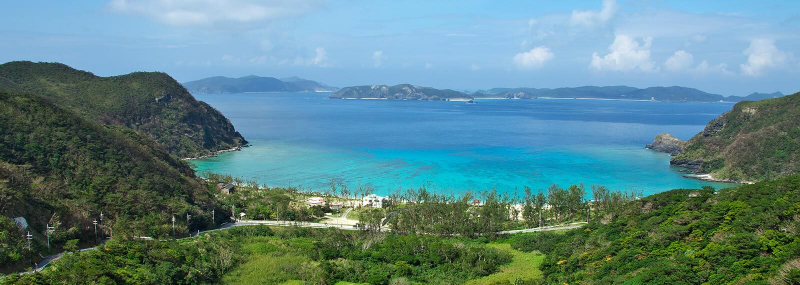
Kerama Shoto National Park -
Nikko, home to the gorgeous Toshogu Shrine, is one of the most beautiful national parks in Japan and, as such, is well worth a visit. The park is rich in history, and the aforementioned shrine, as well as the Buddhist temple of Rinno-ji, are must-sees. Nikko is known for its breathtaking beauty, and tourists are sure to fall in love with all of its beautiful vistas. The streams of Kegon Falls, for example, cascade beautifully into the pools below and are vividly visible amidst the dense trees on each side.
The gigantic Lake Chuzenji, which lays so wonderfully between the mountains and hills that surround it, is just beyond the waterfalls. Mount Nantai is the most remarkable of all, offering a breathtaking view of the lake. Mount Nikko-Shirane is another stunning feature of the park, with its snow-capped top striking out against the brilliant blue skies. The natural beauties on exhibit in Nikko National Park are endless.
Location: Kuroiwasan, Hinoemata, Minamiaizu District, Fukushima 967-0500, Japan
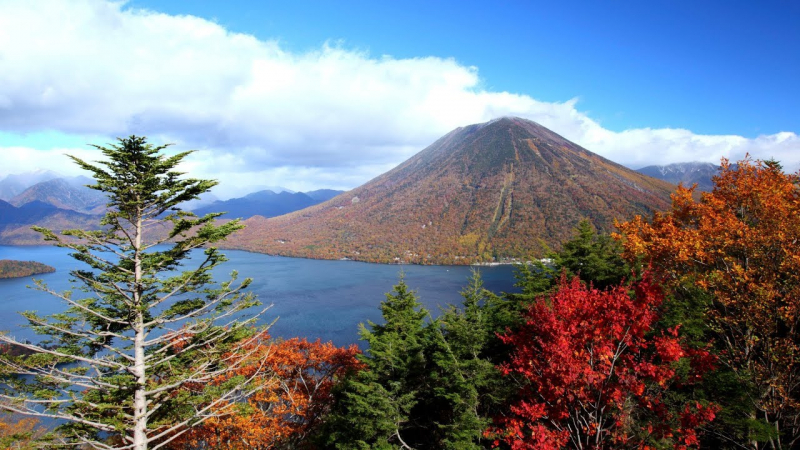
Nikko National Park 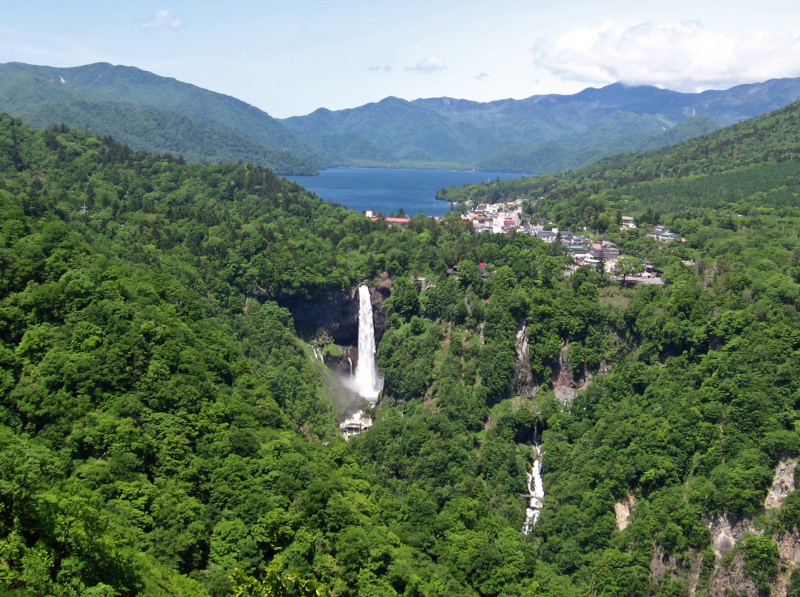
Nikko National Park -
The Shiretoko Five Lakes are a collection of five tiny lakes produced by the neighboring Mount Io's eruption and nourished by subterranean springs. The five lakes, which resemble the result of a god's five fingerprints, give spectacular views of the surrounding mountains and forests and provide tourists with an accessible approach to explore Shiretoko's unspoiled environment. Shiretoko National Park's isolated and secluded position near the north-eastern point of Hokkaido has helped to retain its stunning landscapes pristine and wild.
The park's major attraction is the Five Lakes, which are breathtaking to see; brilliant in their majesty, the lakes are pleasant to roam around, and the mountains and woods that surround them only add to their grandeur. Kamuiwakka Falls is a wonderful site within the park that is well worth the effort to see. Clambering over the river's boulders, the water progressively warms up as you get closer to the source of the hot springs, and soaking in their warm waters is a delightful experience with pure nature all around you. Head to Shiretoko Pass in Shiretoko National Park for a stunning perspective of the surrounding countryside.
Location: Misakicho, Rausu, Menashi District, Hokkaidō 086-1814, Japan
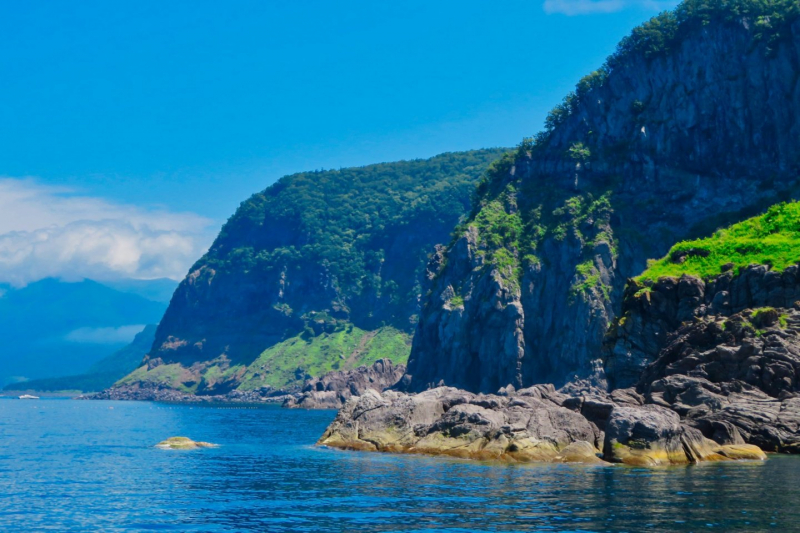
Shiretoko National Park 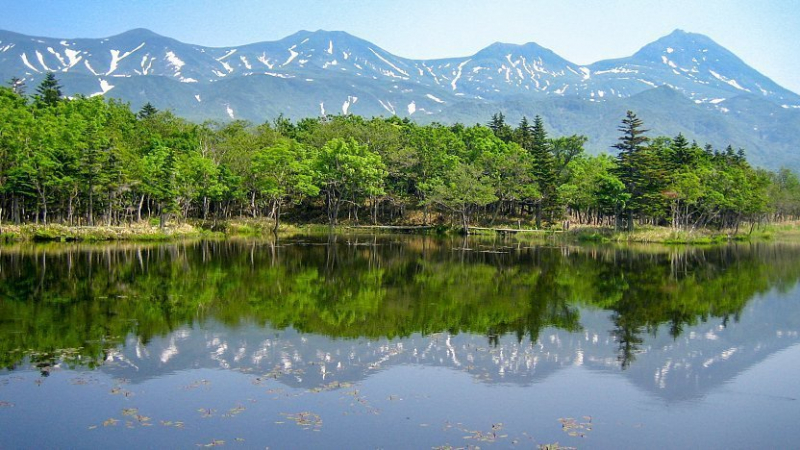
Shiretoko National Park -
The ecology of Akan Mashu, one of the country's oldest national parks, has long been safeguarded and kept for people to enjoy. The park's breathtaking scenery makes it a joy to explore, and its different ecosystems and a vast selection of attractions only add to its magnificence. Visitors might spend weeks exploring Akan Mashu's natural beauties and yet not see everything.
Immersing yourself in the natural environment will fill you with tranquility and a continual sense of wonder at the spectacular beauty around you, with incredible volcanic craters, spreading woods, and crystal clear lakes. From the gorgeous lakes of Onneto and Akan to the mountains of Me-Akan and Nishibetsu and the hot springs of Kawayu, Akan Mashu must be seen to be believed since there is so much to see and do.
Location: Kussharo, Teshikaga, Kawakami District, Hokkaidō 088-3341, Japan
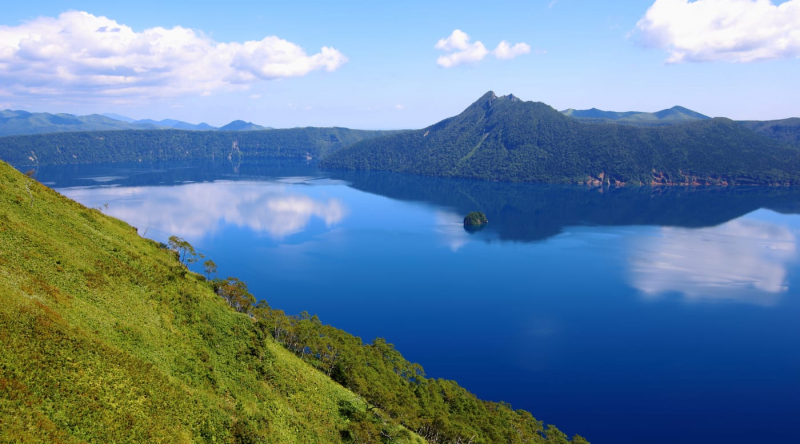
Akan Mashu National Park 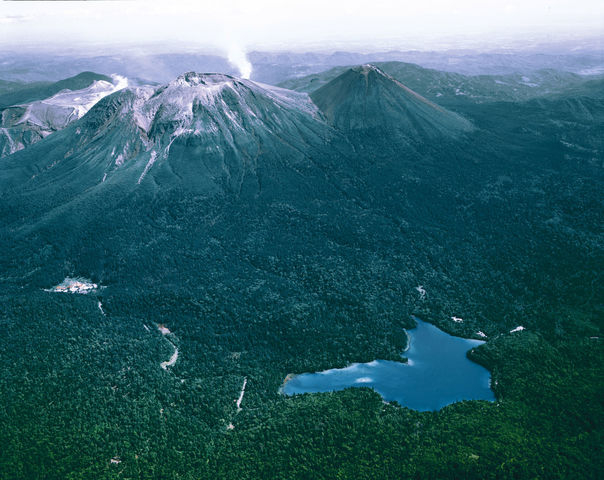
Akan Mashu National Park -
Fuji-Hakone-Izu National Park contains a diverse range of natural beauties, and the various landscapes are breathtaking to explore. The famous Mount Fuji, which is so distinctive in look, is the major lure, and while it is not the only reason it is Japan's most visited national park, it surely helps. The park boasts over a thousand volcanic islands scattered along its beaches, and exquisite streams caress their way through the area's slopes, hills, and valleys.
Lakes and hot springs abound, as do the cherry blossom trees that define its settings. Waterfalls abound, as are historic woods that grew in old lava fields that formerly burned their way down the volcanoes' slopes. Bring your camera; you'll need it to capture all of the breathtaking vistas. It is really incredible to visit.
Location: Shimoda, Shizuoka, Japan
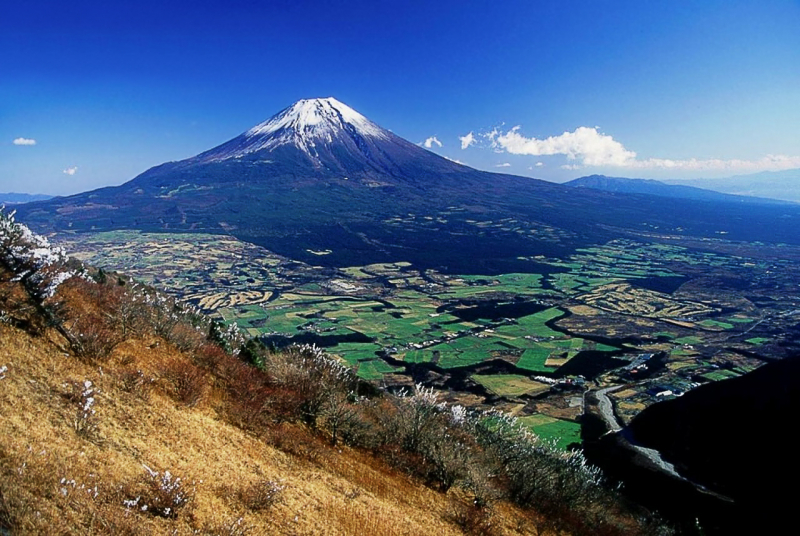
Fuji-Hakone-Izu National Park 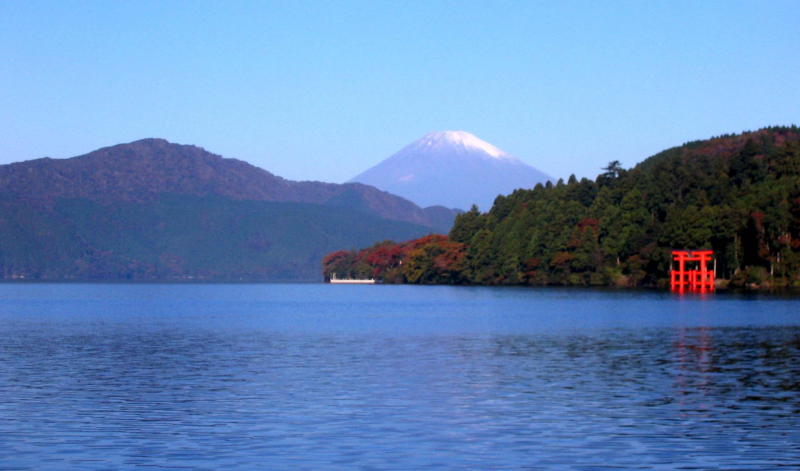
Fuji-Hakone-Izu National Park -
Sanin Kaigan National Park covers 75 kilometers from Tottori to Kyotango, with terrain as diverse as basaltic caverns, sandbars, tunnels, and massive dunes. It spans almost 8,800 hectares and encompasses sections of Kyoto, Hyogo, and Tottori prefectures. Tottori Sand Dunes, which are 16 kilometers long and 2.4 kilometers deep, are located on the park's western boundary. Their undulating geography is captivating, with whirling, wind-formed patterns. Activities such as fat biking, sandboarding, and even paragliding provide a closer look.
Tanegaike, a calm pond just south of the dunes, is guarded by the Otane, the ghost of a lady changed into a snake, according to folklore. The Uradome Coast stretches from Mount Shichi to Cape Kugami, just east of the dunes. Its intricate rock formations, pine-topped islands, and sandy coves make it excellent for sea kayaking or touring by boat. The most renowned of these islands is Sengan-Matsushima Rock, with its sloped granite strata capped dramatically by a lone tree.
Location: Kami, Mikata District, Hyogo, Japan
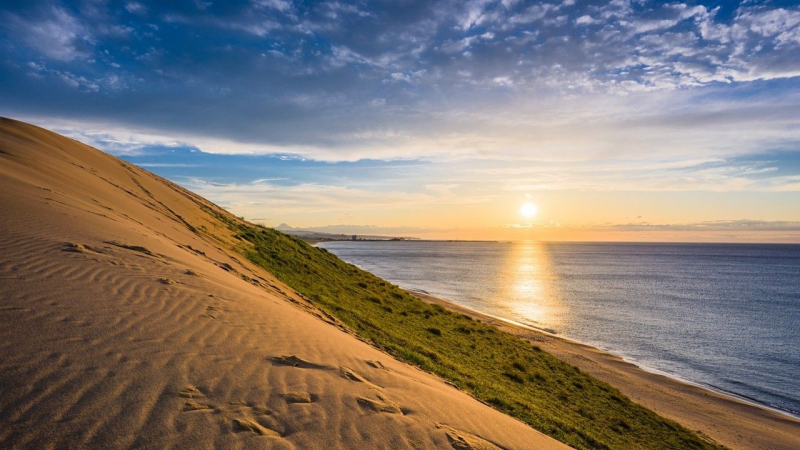
Sanin Kaigan National Park 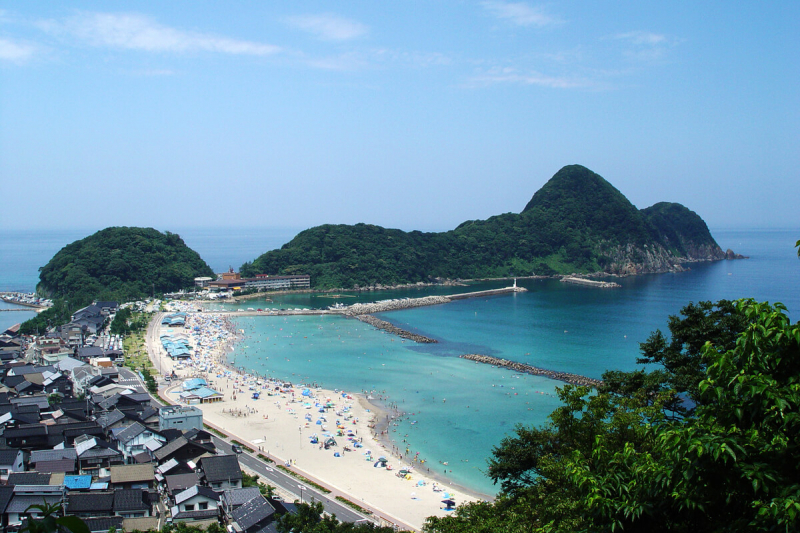
Sanin Kaigan National Park -
The Kirishima region is located at the park's northern edge. It features about 20 volcanoes, large and small, as well as crater lakes, hot springs, and lava plateaus. Mount Karakuni (1,700 m) is the park's tallest mountain, with superb views from its summit. On clear days, Kinkowan Bay, Mount Sakurajima, and Mount Shinmoe may be seen. Onamiike Crater Lake is located at the foot of Mount Karakuri. You can walk around Onamiike in less than 90 minutes, and the stroll is especially beautiful in the fall when the foliage changes colors.
According to local legend, the lake was named after a girl named Onami who was the human manifestation of a dragon. You may camp on the lake at Miike, another crater lake in the Kirishima area, and spend the day kayaking and fishing. The lake is renowned among birdwatchers because it draws wild birds such as the ruddy kingfisher and Mandarin duck.
Location: Kirishima, Kagoshima 899-4201, Japan
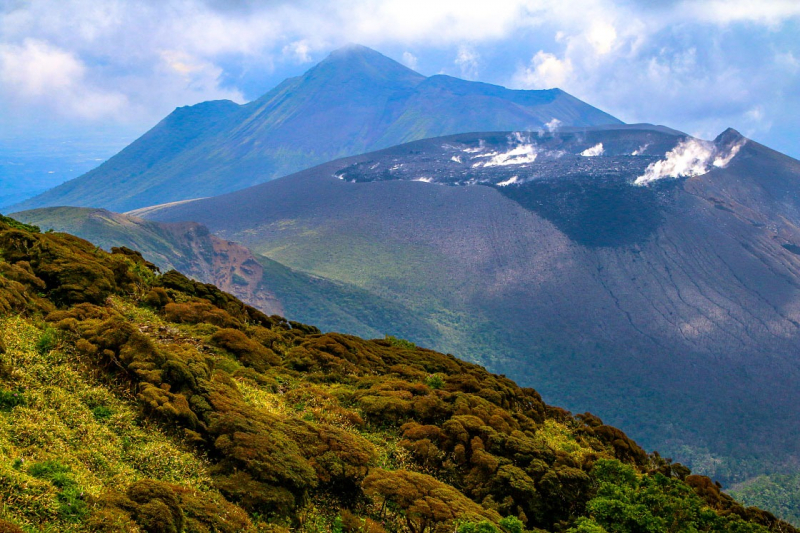
Kirishima-Kinkowan National Park 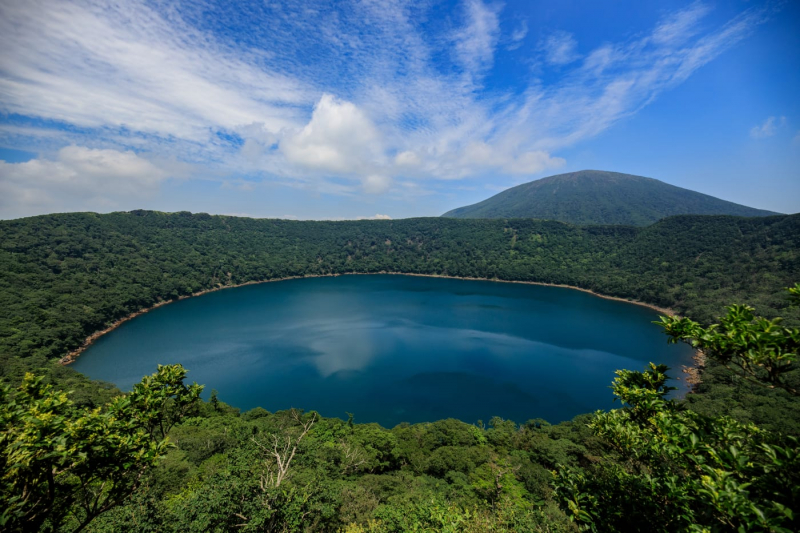
Kirishima-Kinkowan National Park -
Yakushima National Park is made up of two distinct islands. Yakushima, the bigger of the two, is rugged and covered with dense forests of old cedar. Kuchinoerabujima, on the other hand, is dominated by active volcanic peaks with steaming vents and hot springs. Loggerhead turtles may be found on Yakushima, while the Arab flying fox can be seen on Kuchinoerabujima. Yakushima has a diameter of around 25 kilometers and more than 39 mountains with peaks higher than 1,000 meters.
Mount Miyanoura (1,936 m), Kyushu's tallest peak, is located in the island's middle. Hiking through laurel forests on the lower foothills leads to mixed coniferous and deciduous woodlands on the top slopes. On the craggy granite outcrops and worn ridges towards the peak, woodland gives place to shrubs and dwarf bamboo. In the spring, enjoy the vibrant blossoms of evergreen Japanese Pieris (Pieris japonica) and Yakushima rhododendron along these routes. In August and September, the bluish-purple blossoms of the rare perennial plant Yakushima rindo (Gentiana yakushimensis) may be found amid the rocks.Location: Yakushima, Kumage District, Kagoshima 891-4408, Japan
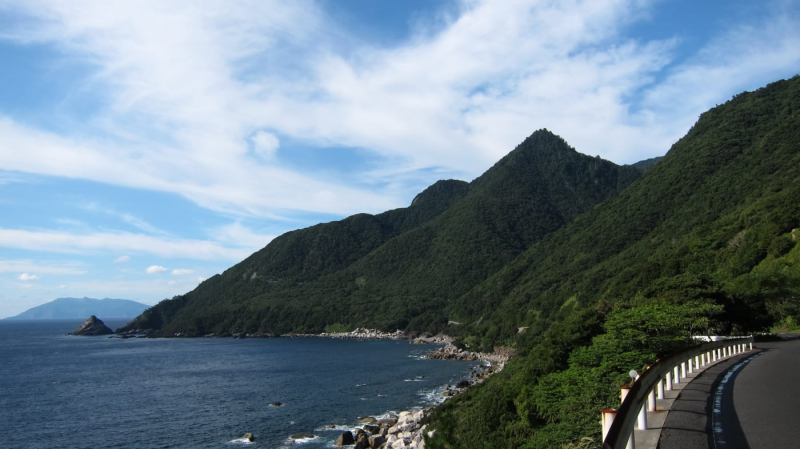
Yakushima National Park 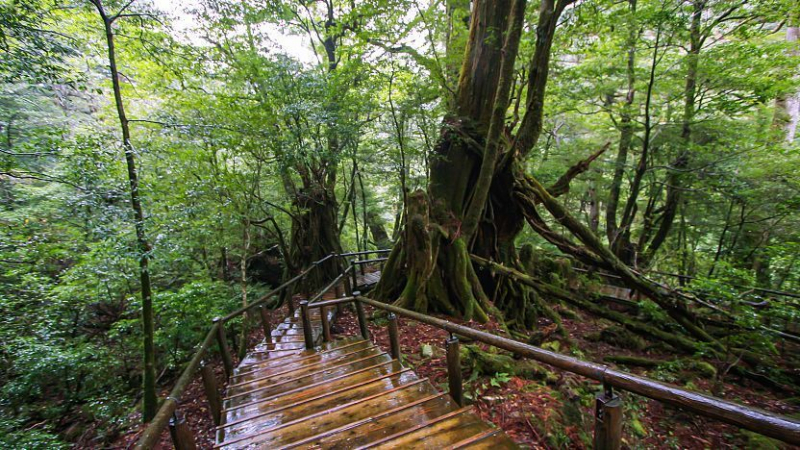
Yakushima National Park















